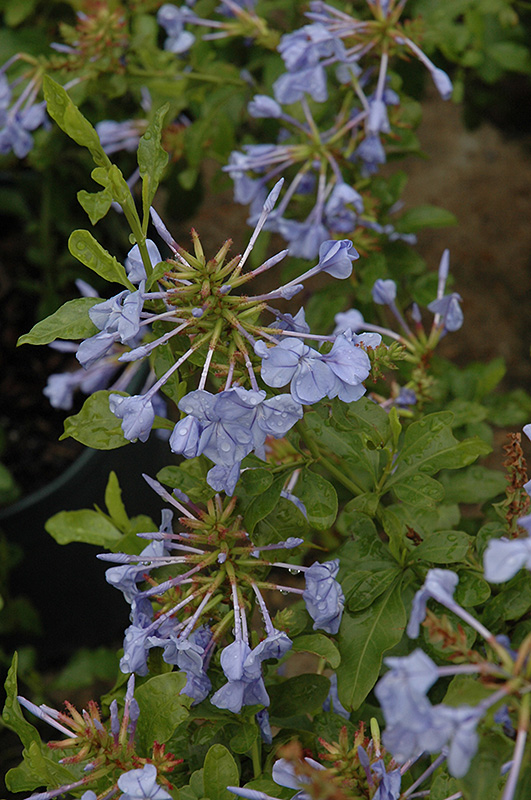Imperial Blue Plumbago
Description
An upright climbing shrub that will form a weeping mound if left on its own, but with a trellis or wall it will reach ten feet; stunning blue flower clusters bloom nearly year round; will die back to the ground in zone 8; an excellent container plant
Landscape Attributes
Imperial Blue Plumbago is a multi-stemmed annual with a shapely form and gracefully arching foliage. Its medium texture blends into the garden, but can always be balanced by a couple of finer or coarser plants for an effective composition.
Imperial Blue Plumbago is recommended for the following landscape applications;
Planting & Growing
Imperial Blue Plumbago will grow to be about 8 feet tall at maturity, with a spread of 10 feet. When grown in masses or used as a bedding plant, individual plants should be spaced approximately 7 feet apart. Although it's not a true annual, this plant can be expected to behave as an annual in our climate if left outdoors over the winter, usually needing replacement the following year. As such, gardeners should take into consideration that it will perform differently than it would in its native habitat.
This plant does best in full sun to partial shade. It prefers to grow in average to moist conditions, and shouldn't be allowed to dry out. It is not particular as to soil type or pH, and is able to handle environmental salt. It is somewhat tolerant of urban pollution. This is a selected variety of a species not originally from North America.
Imperial Blue Plumbago is a fine choice for the garden, but it is also a good selection for planting in outdoor pots and containers. Because of its height, it is often used as a 'thriller' in the 'spiller-thriller-filler' container combination; plant it near the center of the pot, surrounded by smaller plants and those that spill over the edges. It is even sizeable enough that it can be grown alone in a suitable container. Note that when growing plants in outdoor containers and baskets, they may require more frequent waterings than they would in the yard or garden.

